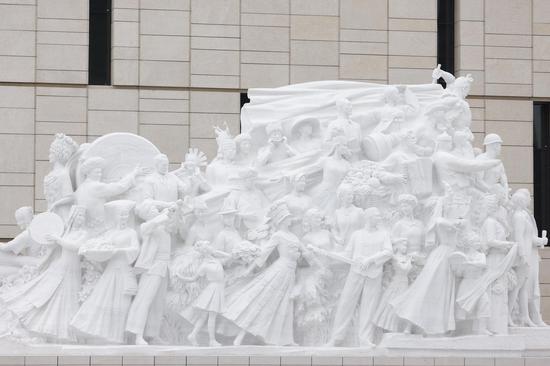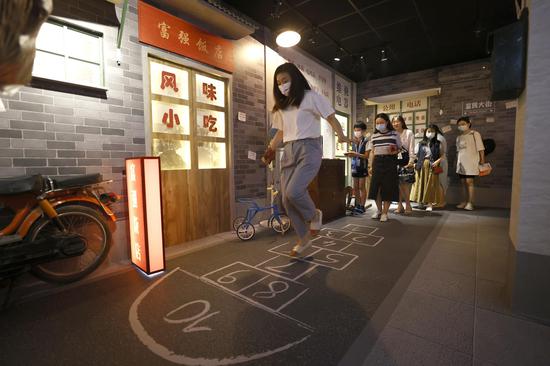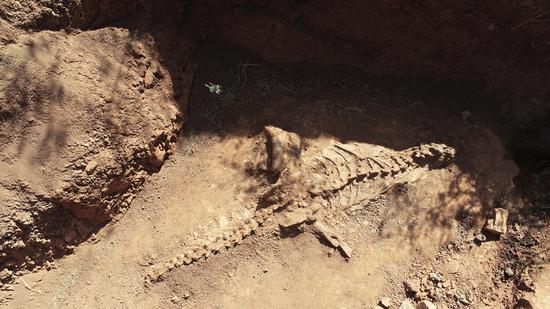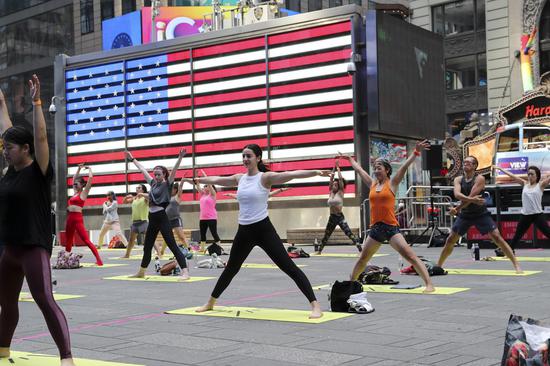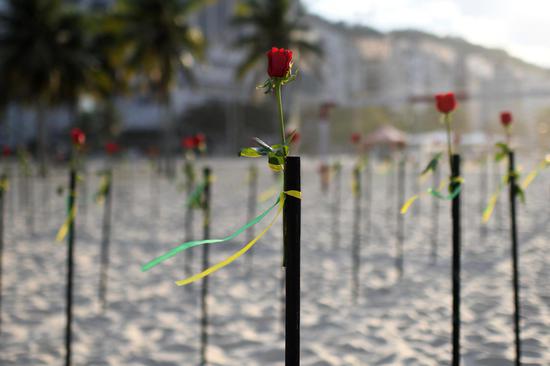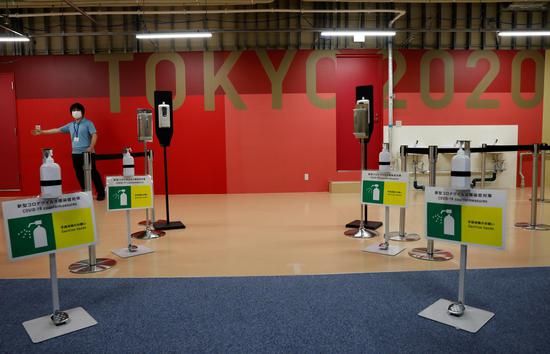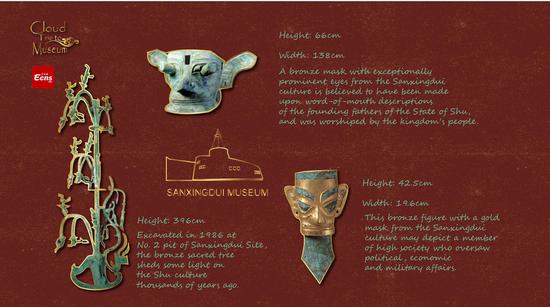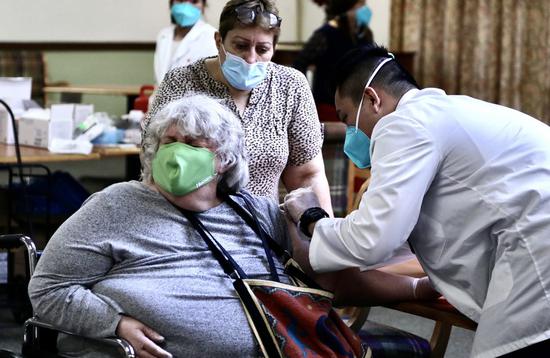
A resident receives a dose of COVID-19 vaccine in Pasadena, Los Angeles County, California, the United States, Jan. 15, 2021. (Photo/Xinhua)
Deaths among Medicare recipients in U.S. nursing homes surged by 32 percent in 2020 amid the COVID-19 pandemic compared to 2019, with the highest increase in death rates among Asian Americans, a government watchdog report released on Tuesday said.
A total of 27 percent of Asian Americans perished in 2020 compared to 17 percent the previous year. For white people, the death rate grew to 24 percent in 2020 from 18 percent in 2019. Death rates for Hispanic and black patients were 23 percent last year, up from 15 percent in 2019, the report from the inspector general of the Health and Human Services Department said.
Medicare is a government-funded program which provides healthcare coverage to the elderly, while Medicaid is the state-federal medical program for low-income people.
"We knew this was going to be bad, but I don't think even those of us who work in this area thought it was going to be this bad," said Harvard health policy professor David Grabowski, a nationally recognized expert on long-term care, who reviewed the report.
"This was not individuals who were going to die anyway," Grabowski said. "We are talking about a really big number of excess deaths."
Health economist Tamara Konetzka of the University of Chicago, who reviewed the report for The Associated Press, said the findings about Asians highlight a riddle for researchers.
The reasons for higher cases and deaths among blacks, Hispanics and Asians may not necessarily be tied to race and ethnicity. Instead, minority patients may be clustered in homes located in communities with more severe outbreaks, she said.
The report said 22.5 percent of all Medicare patients in nursing homes died in 2020, compared to 17 percent in 2019. The deaths overall jumped by 169,291 from the previous year.
The report found that about 4 in 10 Medicare recipients in nursing homes had or likely had COVID-19 in 2020. This represented about 1.3 million people. Death rates were higher in every month last year when compared with 2019.
Two spikes
The report documented two spikes in deaths. In April last year, a total of 81,484 Medicare patients in nursing homes died. Then eight months later, after lockdowns and frantic efforts to expand testing but before vaccines became widely available, nursing home patients accounted for 74,299 deaths in December.
"This is happening long after it was clear that nursing homes were particularly vulnerable," said Nancy Harrison, a deputy regional inspector general who worked on the report.
"We really have to look at that. Why did they remain so vulnerable?"
The report was the most comprehensive yet from the government because it included statistics for the early part of last year during the initial coronavirus surge. Medicare did not require nursing homes to report COVID-19 cases and deaths occurring before May 8, more than four months into the pandemic.
The inspector general's office based its analysis on Medicare billing data, including patients in Medicare Advantage plans sold by private insurers. Medicare covers the vast majority of nursing home patients.
The report included long-term residents as well as those temporarily at a facility for rehab care.
The report also found that low-income nursing home patients covered by Medicare and Medicaid together were much more likely to have gotten COVID-19. The infection rate for that group hit 56 percent and 26 percent died.
Some states suffered the most. By the end of December, more than half of Medicare patients in nursing homes in Connecticut, Illinois, Louisiana and New Jersey had or likely had COVID-19.
Across the U.S., the coronavirus found ideal conditions to spread among frail nursing home patients living in close quarters. Many researchers believe it's likely staffers unwittingly brought the virus in from surrounding communities.









